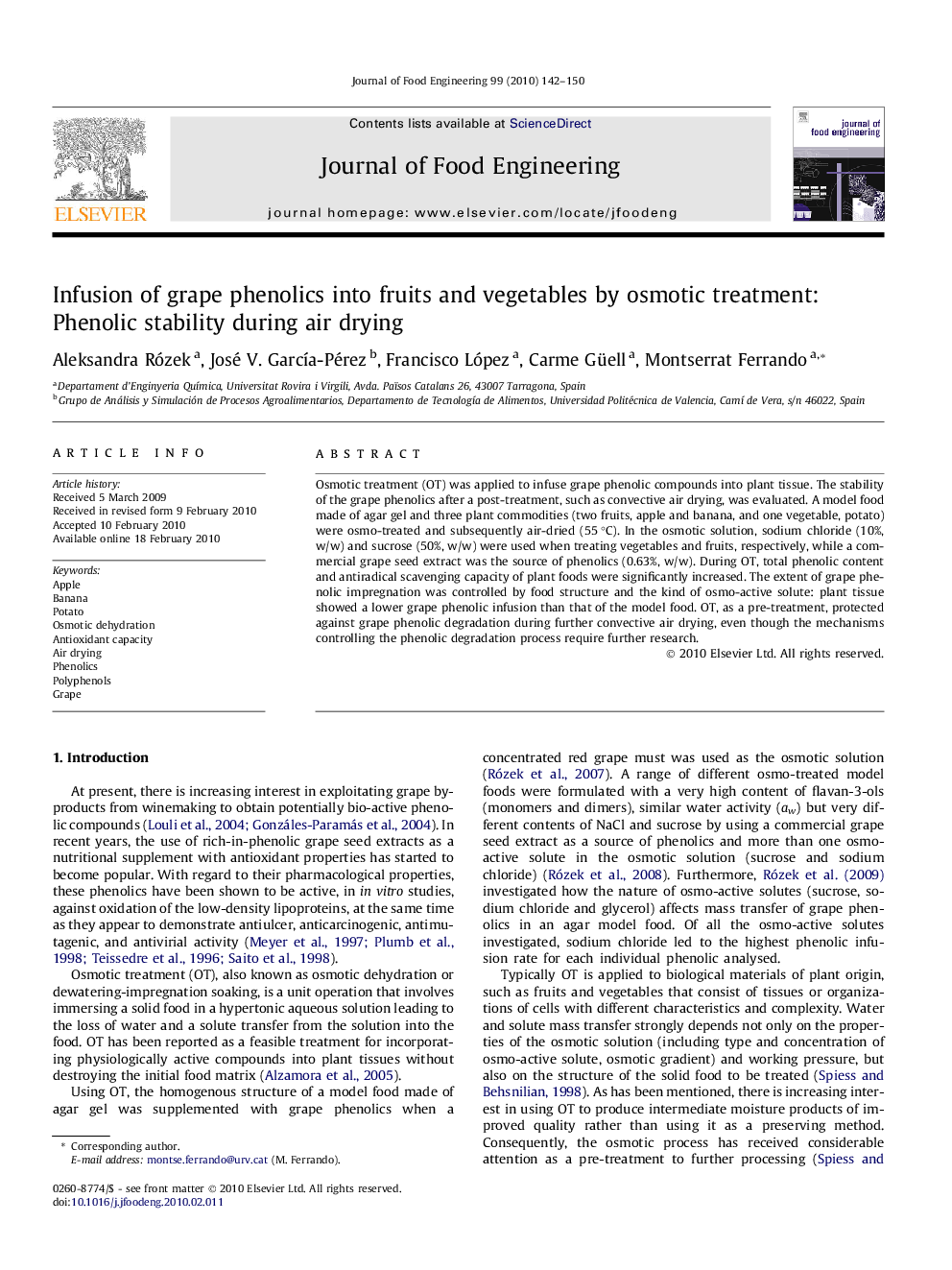| Article ID | Journal | Published Year | Pages | File Type |
|---|---|---|---|---|
| 224071 | Journal of Food Engineering | 2010 | 9 Pages |
Osmotic treatment (OT) was applied to infuse grape phenolic compounds into plant tissue. The stability of the grape phenolics after a post-treatment, such as convective air drying, was evaluated. A model food made of agar gel and three plant commodities (two fruits, apple and banana, and one vegetable, potato) were osmo-treated and subsequently air-dried (55 °C). In the osmotic solution, sodium chloride (10%, w/w) and sucrose (50%, w/w) were used when treating vegetables and fruits, respectively, while a commercial grape seed extract was the source of phenolics (0.63%, w/w). During OT, total phenolic content and antiradical scavenging capacity of plant foods were significantly increased. The extent of grape phenolic impregnation was controlled by food structure and the kind of osmo-active solute: plant tissue showed a lower grape phenolic infusion than that of the model food. OT, as a pre-treatment, protected against grape phenolic degradation during further convective air drying, even though the mechanisms controlling the phenolic degradation process require further research.
